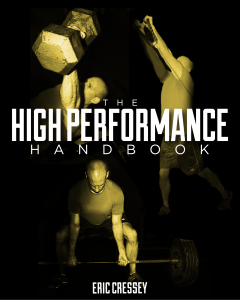Better Movement from the Inside Out
I have attended a lot of great seminars during my time in the strength and conditioning field. In the early days, I’d walk away with a lot of valuable information that I could immediately apply. It was almost like drinking from a fire hose!
Interestingly, as the years went on, I took less and less from seminars – in spite of the fact that the fitness field was a rapidly evolving industry, with new research emerging every single day. The reason for this is very simple: as the industry developed, so did my knowledge – which means I had developed a better filter to separate what was useful from what wasn’t a good fit for my clients.
As a result, when I attend seminars now, I’m psyched to walk away with one or two things – however small – that we can immediately apply with our clients. And, if I come across something that does more than that, it’s a game changer.
For me, the concept of working from the inside out – or proximal to distal – has been exactly that. Since it’s a recurring theme in the program in my new resource, The High Performance Handbook, I thought I’d use today’s post to go into a bit more detail.
Simply stated, this means that you get things right in the core before working on what’s going on with the extremities. It seems so basic, but it’s something that’s been missed by loads of fitness professionals and rehabilitation specialists for a long time. Why stretch a shoulder or the hamstrings if you haven’t taken into consideration where the lumbar spine is positioned?
This wasn’t just one part of a seminar, though; it was a theme that kept emerging on a number of fronts.
First, the research demonstrated that training core stability improved hip internal rotation. That’s right; you don’t have to stretch someone into internal rotation to improve it. Just get people to “neutral” and then stay there while training, and good things happen.
Then, I checked out some of the Postural Restoration Institute seminars, applied some of their positional breathing principles, and saw athletes gain more than 30° of shoulder internal rotation without me even touching their shoulders. Their hip internal rotation improved, and they were able to adduct and extend the hips more effectively.
Seeing these changes in action was awesome, but at the same time, they were moments that made me think “why didn’t I ever think of this before?” It’s just a matter of restoring proper alignment with breathing and adequate core recruitment to facilitate that breathing. When alignment is “on,” protective tension doesn’t have to kick in.
If you stretch and you’re out of alignment, you get instability. If you strengthen and you’re out of alignment, you shift more stress to passive restraints (which may create more instability) and you get overuse injuries.
Working proximal-to-distal is a theme you see in all our warm-ups and the way that we approach arm care with our athletes. If you establish “good stiffness” early on, warming-up the entire rest of the body becomes a much more efficient process, as you aren’t just reaffirming bad patterns.
As I noted, this proximal-to-distal approach is also heavily emphasized in my new resource, The High Performance Handbook, in the assessment portions, programs, and detailed exercise technique videos. Regardless of whether you’re looking for some direction in your own training or in your work with clients, this will be a “clutch” resource to which you’ll refer for years to come.




